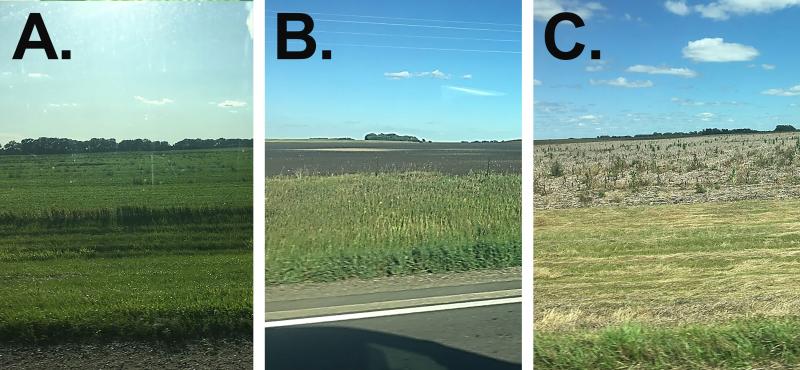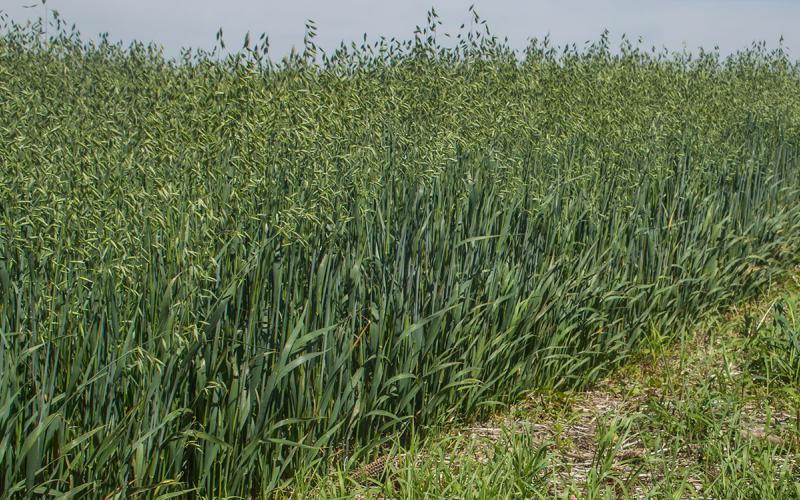Driving around South Dakota, you can see the many acres that farmers were not able to plant. Figure 1 shows examples of prevent plant acres that were planted with a cover crop to help reduce erosion and improve soil health, only tilled or sprayed to control weeds, or no tillage or weed control because soils were too wet. Now that fall soil-sampling season is well on its way, many people have questions regarding how these different situations of prevented planting will affect soil sampling and fertilizer application needs. Crediting fertilizer applied prior to the 2019 crop in prevented planting situations depends on whether the nutrients are mobile or immobile in the soil (Dan Kaiser, Extension Soil Fertility Specialist, UMN). The following is a summary of important points to consider for both mobile and immobile nutrients after prevent plant.

Mobile Nutrients
The nitrate form of nitrogen and sulfate form of sulfur are both mobile in the soil and could have moved below the rooting depth of crops during the large rain events we have experienced this past growing season. These nutrients also could have been taken up by the planted cover crops or weeds in the prevent plant acres. The nitrogen taken up by these plants can become available for the next crop as the plant material decays after it has been terminated by cold winter weather or herbicides. Further, plant available nitrogen can accumulate in fields where no plants were growing from organic matter decomposing in the soil, potentially increasing the nitrogen credit for the following crop. Regardless of your specific prevent plant situation, it is recommended in South Dakota to take a 2-foot soil sample (divided into 0-6 and 6-24 inch depths) to determine your nitrogen and sulfur fertilizer application needs each year before a nitrogen requiring crop such as wheat and corn. Soil biological activity affects nitrogen and sulfur soil test levels. Thus, warmer than normal winter and early spring temperatures can lead to higher nitrogen levels in the spring compared to fall. Therefore, if you sample in the fall, it is recommended to wait until after soil temperatures are below 50°F. Above this temperature, nitrogen and sulfur are released from organic matter and crop residue; and below this temperature, nutrient releases normally become negligible. For more information see the SDSU Extension factsheet, "Recommended Soil Sampling Methods for South Dakota."
Immobile Nutrients
Phosphorus, potassium, and zinc are immobile in the soil. These nutrients can still move in the soil, but significantly less than nutrients that are considered mobile. Because these nutrients are less mobile in the soil, phosphorus, potassium, and zinc applied in the fall of 2018 will likely be available for next year’s crop and can be credited if plant material was not removed from the field. However, soil testing can help improve your confidence of current soil nutrient levels and the rate of fertilizer applications needed for next year’s crop. If soils tested medium to low in phosphorus prior to the prevented planting and corn will be grown in 2020, it is advisable to apply a low rate of phosphorus as a starter (Dan Kaiser, Extension Soil Fertility Specialist, UMN).
For more information on prevent plant, see the video below.
The nitrate form of nitrogen and sulfate form of sulfur are both mobile in the soil and could have moved below the rooting depth of crops during the large rain events we have experienced this past growing season.

